Key Takeaways
- The pescatarian diet is a vegetarian diet that includes seafood, and sometimes dairy and eggs.
- The pescatarian diet is higher in some nutrients than vegan and other vegetarian diets.
- As long as you manage your diet properly, you’ll have no trouble building muscle, losing fat, and staying healthy while eating a pescatarian diet.
Plant-based diets are more popular than ever, and for good reason.
Research shows that people who eat an abundance of fruits, vegetables, legumes, nuts, and whole grains tend to live longer and stay healthier than those who eat little.
You probably know this and, understandably, are considering a major overhaul to your diet, but aren’t wholly sold on the idea of cutting out animal products entirely.
How are you supposed to get enough protein?
Will you be able to cover all of your nutritional bases with plants alone?
Will you actually enjoy your meal plans?
Well, the short answer to each of those questions is “yes,” but it’s not necessarily easy because certain animal foods make it much easier to improve your body composition and stay healthy.
That’s why more and more people are turning to “modified” vegetarian diets like the pescatarian diet, which is simply a vegetarian diet that includes seafood.
Some pescatarians also eat eggs and dairy, as well, which is technically known as “lacto-ovo-pescatarianism.”
As you’ll see, pescatarian diets require a little more fine-tuning than regular omnivorous diets, but if you understand and address the downsides and limitations, you’ll have no problem using the pescatarian diet to build a lean, healthy, athletic body you can be proud of.
By the end of this article, you’re going to understand . . .
- What the pescatarian diet is
- Its pros and cons
- The most common muscle-building mistakes pescatarians make
- How to use the pescatarian diet to maximize muscle growth, fat loss, and strength gains
- What foods to eat on a pescatarian diet plan
- And more!
Let’s start by defining exactly what a pescatarian diet is.
(Or if you’d prefer to skip all of the scientific mumbo jumbo, and you just want to know how many calories, how much of each macronutrient, and which foods you should eat to reach your health and fitness goals, no problem! Just take the Legion Diet Quiz, and in less than a minute, you’ll know exactly what diet is right for you. Click here to check it out.)
Table of Contents
+
Want to listen to more stuff like this? Check out my podcast!
What Is the Pescatarian Diet?
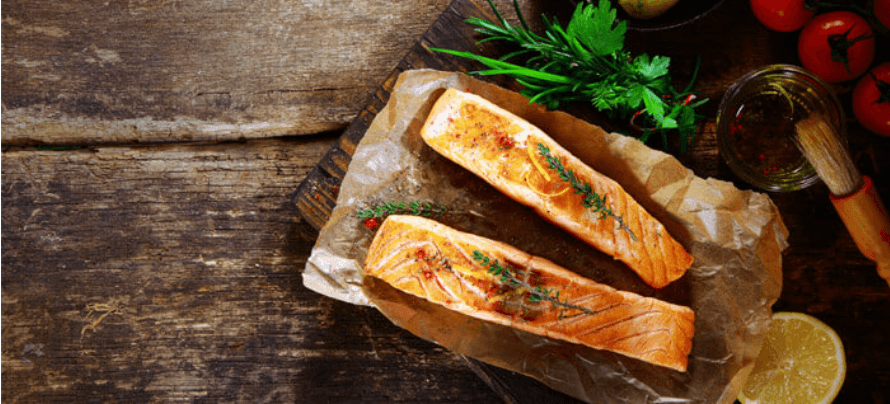
Do a Google search for “pescatarian diet,” and you’ll find endless opinions on what you’re supposed to eat.
Some say that you can only eat plants and fish.
Others say you can eat plants and any kind of seafood, like mussels, shrimp, etc.
And still others say you even throw eggs and dairy into the mix and call yourself a pescatarian.
Who’s right?
Well, to cut through the confusion, let’s use the Merriam-Webster dictionary definition for a pescatarian:
“One whose diet includes fish but no other meat.”
So, really anyone who follows a plant-based diet and eats seafood but no poultry, beef, pork, or flesh from other land animals, is following a pescatarian diet. Most pescatarians also eat eggs and dairy, but that’s not always the case.
The term “pescatarian” comes from combining the Italian word for fish, “pesce,” with the word “vegetarian.”
Some people also refer to this style of eating as “vegequarianism,” which is a combination of the words “vegetarian” and “aquatic.”
In most versions of the pescatarian diet, there are no restrictions on the kind of seafood you’re allowed to eat. This includes fish, mussels, shrimp, and anything else that lives in water and isn’t a mammal.
That said, many proponents of the pescatarian diet also promote eating wild-caught seafood whenever possible.
The 3 Major Benefits of the Pescatarian Diet
There are three main benefits to following a pescatarian diet:
- It reduces your risk of developing a number of diseases, like cancer, diabetes, and high blood pressure.
- It’s high in nutrients that many people’s diets lack.
- It’s easier for most people to follow than strict plant-based diets (such as a vegan diet).
Let’s dive a bit deeper into each of these points.
1. The Pescatarian Diet Is Generally Associated With Better Health
The scientific literature clearly shows that, on the whole, people who follow a pescatarian diet tend to be healthier than omnivores.
A multitude of studies have found that people who get the majority of their calories from plants have a lower risk of cancer, diabetes, heart disease, high blood pressure, and just about every other modern ailment.
A good example of this comes from a review study conducted by scientists at the University of Oxford. The researchers analyzed eight large-scale studies that tracked the health of people following different diets, and 30 to 60% of the dieters in each study were vegetarian.
This allowed scientists to directly measure the rates of disease and death among vegetarians and omnivores, and while vegetarianism isn’t the same as pescatarianism, it’s close enough to expect similar health outcomes.
The researchers found that on average, vegetarians and vegans had a lower risk of . . .
- Being overweight or obese
- Diabetes (half the risk of meat-eaters in one study)
- Heart disease (30% lower in one study)
- Gut diseases such as diverticulitis
- Cataracts
- Kidney stones
- Arthritis
If you take research like this at face value, you have to conclude avoiding meat is absolutely necessary for healthy living.
The truth, though, is more complex, however, because the reason pescatarians tend to be healthier isn’t just eschewing meat. Instead, their superior health appears to be due to three factors:
- Cutting out meat eliminates many foods that are high in calories, saturated fat, and potentially unhealthy ingredients like trans fats.
- Eating more fish is tied to a number of health benefits, such as a reduced risk of heart disease and Alzheimer’s disease (which are largely thanks to higher omega-3 intakes).
- People who follow pescatarian diets also tend to live healthier lifestyles on the whole—they smoke less, exercise more, and eat less junk food and more fruits, vegetables, whole grains, and fiber.
In other words, pescatarianism is especially appealing to many health-conscious people who are naturally more careful about what they put into their bodies and why. And that alone partially explains why pescatarians (and vegetarians) tend to be healthier than your average omnivores.
2. The Pescatarian Diet Is High In Key Nutrients
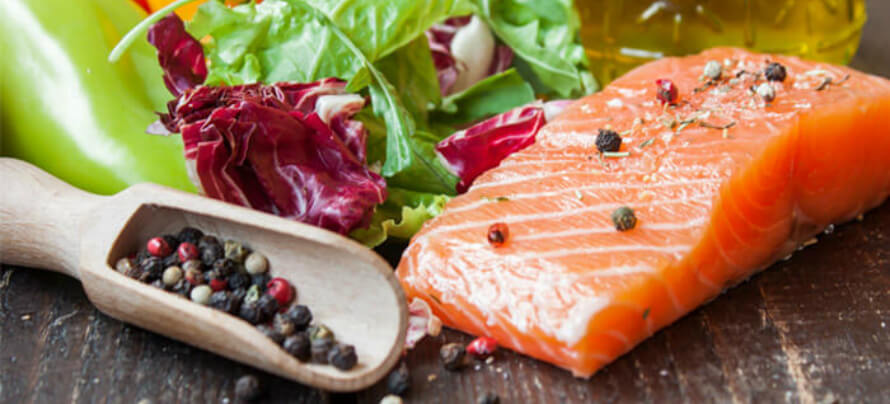
If you’re currently eating like most Americans, switching to a pescatarian diet will drastically increase your micronutrient intake.
For example, pescatarians get more vitamin A, B2, C, and E, and other nutrients like carotene, calcium, folate, phosphorus, and fiber than meat-eaters. They also eat less cholesterol and sodium (which aren’t bad in and of themselves, but they’re generally signs of high junk food consumption).
Thanks to their above-average fish consumption, pescatarians also get more omega-3 fatty acids than omnivores, which benefits the body in many ways, including . . .
- Reducing the risk of disease (heart disease, stroke, and type 2 diabetes in particular)
- Decreasing systemic inflammation
- Improving mood, cognitive performance, and brain health
- Helping prevent weight gain
- Optimizing fat loss
- Accelerating muscle growth
The reason for this is some fish are especially abundant in two crucial types of omega-3 fatty acids, eicosapentaenoic acid (EPA) and docosahexaenoic acid (DHA).
Research shows that a combined intake of 500 milligrams to 1.8 grams of EPA and DHA per day is adequate for maintaining sufficiency, but additional health benefits can be seen up to a combined intake of 6 grams per day.
Most people’s diets provide just one tenth of the EPA and DHA recommended to preserve health and prevent disease, so even a moderate increase in these fatty acids can provide significant benefits.
A single serving of fresh or frozen salmon has 0.7 to 1.5 grams of total omega-3s, so it doesn’t take much to hit the recommended amounts. Other fish high in omega-3s include mackerel, sardines, and herring, as well as most other high-fat fish that live in cold water.
The pescatarian diet is higher in a number of nutrients than the standard American diet, especially omega-3 fatty acids, which is largely responsible for the improved health of pescatarians.
3. The Pescatarian Diet Is Easier to Follow Than Strict Veganism
Vegan and vegetarian diets have their merits, but many people find them very hard to stick to.
Not only do they have to give up some of their favorite foods, they have to get creative to get enough protein every day if they exercise regularly and struggle to find appropriate foods when eating out and socializing.
The pescatarian diet, on the other hand, is more inclusive and flexible and thus more enjoyable and easier to stick to.
Most restaurants have a seafood-based option that fits a pescatarian diet, so no matter where you go out to eat, you won’t feel left out. Adding a small serving of fish or seafood to an otherwise all-veggie dish can also make it tastier!
Finally, including fish in your diet gives you myriad choices when creating a pescatarian meal plan, whereas many people get sick of trying to only eat plants.
So, the bottom line is this:
The pescatarian diet is leagues ahead of how most people eat. If everyone in America were to become pescatarians tomorrow, we would see a long-term decline in just about every major disease and dysfunction that currently plagues us.
That said, it does have a few drawbacks you need to understand and address.
The 3 Downsides to the Pescatarian Diet
The three main problems with the pescatarian diet are . . .
- It can be high in mercury.
- It can be lower in certain key nutrients than a diet that includes meat.
- It’s harder to follow than a plant-centric omnivorous diet.
Let’s start with the first issue.
1. It Can be High in Mercury
If you work out regularly and want to follow a pescatarian diet, you’re going to have to eat a lot of fish to get enough protein.
That’s good for getting plenty of omega-3s and other nutrients, but many fish also have surprisingly high levels of mercury.
For example, bigeye tuna, a fish known to have above average mercury levels, contains around 0.69 parts per million of mercury, or around one gram of mercury per 1,500 kilograms of tuna.
On the other hand, scallops contain just 0.003 parts per million of mercury, or around one gram of mercury per 350,000 kilograms of scallops.
This isn’t a problem if you’re only eating a few servings of fish per week, but it can be unhealthy when you’re eating two, three, or four servings of fish per day, as some pescatarians do. For example, high intake of mercury can cause nerve, brain, and DNA damage, especially to developing babies.
The good news is that most of the fish that people eat on a regular basis aren’t that high in mercury, with the worst being the following:
- Tilefish from the Gulf of Mexico
- Swordfish
- Shark
- King Mackerel
- Bigeye Tuna
- Orange Roughy
- Marlin
- Spanish Mackerel
- Grouper
- Tuna (every other kind)
And the seafood with the least mercury? They are . . .
- Scallop
- Shrimp
- Clam
- Oyster
- Sardine
- Tilapia
- Canned salmon
- Anchovies
- Fresh or frozen salmon
- Squid
Generally speaking, the smaller the fish, the less contaminated it is due to the principles of biomagnification.
You may have also heard that many fish contain toxins like dioxins and PCBs. While that’s true, the levels in fish and seafood are similar to that of other animal products, and so small that the benefits of eating more seafood far outweigh the risks.
As long as you minimize your intake of the fish that are highest in mercury and prioritize the fish that are lowest, you should be fine.
2. It Can Be Lower in Certain Key Nutrients
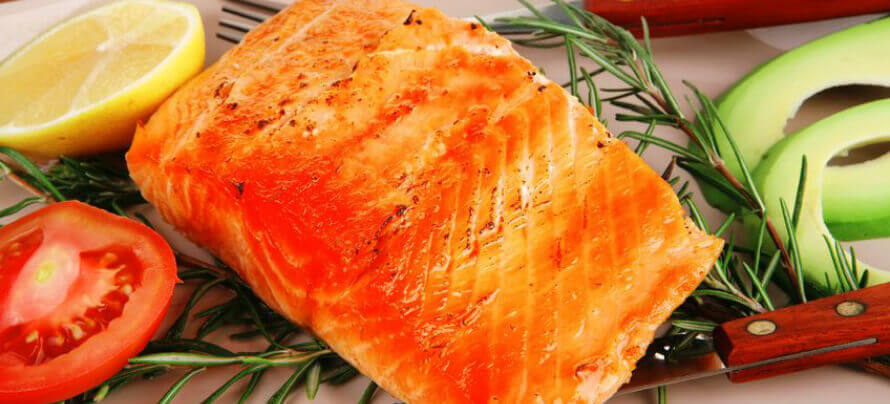
Avoiding all poultry and meat reduces your intake of several key nutrients, including vitamin D, vitamin B12, and iron.
It can be hard to get enough vitamin D on a strict plant-based diet because the primary dietary sources are fatty fish, fortified dairy foods, and breakfast cereals (and most people in general don’t get enough sun exposure to maintain adequate vitamin D levels).
The pescatarian diet is slightly better in this regard because some seafood is high in vitamin D, like salmon, herring, and sardines, but other kinds like shrimp, clams, and tuna have very little.
So, if you’re going to follow the pescatarian diet, it’s a good idea to eat several portions of salmon or other fatty, cold-water fish per week or supplement with vitamin D.
Luckily, most fish that’s high in omega-3s is also high in vitamin D, so if you’re eating high-omega 3 fish, you’re probably getting a decent dose of vitamin D, too.
Another thing you’ll want to watch out for on the pescatarian diet is a vitamin B12 deficiency, which is common when animal foods are cut from one’s diet.
Most fish have very little B12, but sardines, mackerel, and salmon are good sources along with dairy and eggs. If you aren’t going to eat any of those foods regularly, you may want to take a B12 supplement.
Despite what you may have heard, pescatarians actually get more iron in their diet than most meat-eaters. The problem is that they get the majority of their iron from plants, which only contain non-heme iron, which isn’t absorbed as well and doesn’t confer the same health benefits as the kind found in meat, called heme iron.
The easy solution here is regularly eating oysters, clams, shrimp, and other shellfish, which tend to be higher in iron than other kinds of seafood. You can also try cooking more of your food in cast iron cookware, which increases the iron content of your meals.
A pescatarian diet will generally provide less vitamin D and B12 and bioavailable iron than an omnivorous diet, but this can largely be corrected by eating plenty of vitamin-rich fish like salmon, sardines, mackerel, and herring and iron-rich seafood like oysters, clams, shrimp, and other shellfish. Eating some eggs and dairy can also go a long way in covering your micronutritional bases.
3. It’s Harder to Follow than a Plant-Centric Omnivorous Diet
Think about how many popular cuisines and dishes include plentiful amounts of beef, pork, poultry, and dairy.
A rather long list, right?
Accordingly, the more of those foods that you cut out of your diet, the harder and harder it is to keep your meal plans interesting. And while a pescatarian diet offers more choices than a vegan or vegetarian diet, it’s still far more constrained than an omnivorous diet.
Luckily, with the right recipes, you can keep things fresh and interesting. Here are some of our most popular vegetarian, vegan, and seafood recipes:
- 20 Surprisingly Easy Sushi Recipes That You Can Make at Home
- 20 Easy Vegetarian Recipes So Good You Won’t Miss the Meat
- 20 Healthy Shrimp Recipes You Have to Try This Summer
- 10 Canned Salmon Recipes You’ll Want to Eat Every Week
- 20 Meatless High-Protein Recipes That You’ve Got to Try
- 20 Healthy & Delicious Seafood Recipes You’ll Love to Eat
- 20 Healthy Salmon Recipes That Are Easy to Make and Oh-So-Good
(Not all of these are 100% pescatarian, but you can easily substitute meat with a pescatarian-friendly protein).
So, in terms of health, it’s really hard to poke holes in the pescatarian diet. Now let’s see how effective it is at helping us lose fat and build muscle.
How Good Is the Pescatarian Diet for Losing Weight?
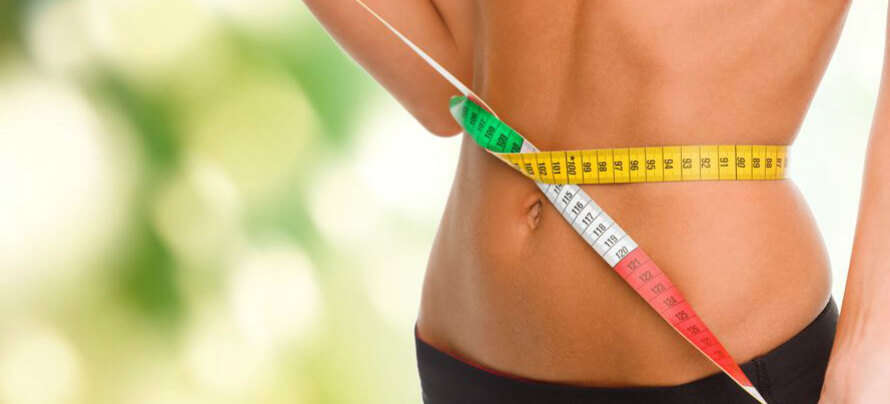
As I’ve written about many times before, weight loss is about how many calories you eat, not what foods you eat.
The bottom line is this:
If you want to significantly decrease your body fat percentage, you must feed your body less energy than it burns.
When you do this, your body will slowly whittle down its fat stores to obtain the energy it needs.
None of that changes when you follow a pescatarian diet. Energy balance is still king.
A pescatarian diet can help in your weight loss efforts, though, by making it easier to eat fewer calories, snack less, and make sure that you’re losing fat and not muscle. These are several of the reasons why research shows that pescatarians generally maintain a lower body weight than regular meat eaters.
So, while I’m not generally a fan of cutting out whole food groups to lose weight, if you’re going to follow a more restrictive eating plan, the pescatarian diet isn’t a bad choice. It’s also more logical than cutting out dietary bogeymen like lectins, “toxins,” or carbs.
That said, if you’re going to get the results that you really want, you’re going to need to know how to create a pescatarian meal plan that works.
Check out this article to learn how to do just that:
The Definitive Guide to Effective Meal Planning
How Good Is the Pescatarian Diet for Building Muscle?
When it comes to building muscle, decades of anecdotal and scientific evidence have proven that certain elements of your diet and training are more important than others.
For example, if you want to maximize muscle growth . . .
- You want to ensure you’re not in a calorie deficit.
- You want to progressively overload your muscles.
- You want to focus on compound exercises.
- You want to limit your cardio.
- You want to eat plenty of carbs.
- And you want to eat enough protein.
As long as you’re checking off all of those boxes, you’ll have no trouble building muscle following a pescatarian diet.
The part that many pescatarians struggle with, though, is that last point.
Dozens and dozens of well-designed and well-executed studies have proven beyond the shadow of a doubt that a high-protein diet is superior for building muscle and losing fat than a low-protein one.
In terms of an exact amount, research shows that optimal protein intake for bodybuilding is between 0.8 grams and 1.2 grams per pound of body weight per day.
For a 200-pound man, that’s 160 to 240 grams of protein per day—a huge amount by most people’s standards.
Fortunately, with a bit of planning, it’s not hard to meet your protein requirements on a pescatarian diet.
There are many different kinds of seafood to choose from, some of which you probably haven’t considered.
Here are some of my favorites:
Fish & Seafood
- Halibut
- Salmon
- Shrimp
- Scallops
- Sardines
- Tuna
- Tilapia
- Clams
- Crabs
- Hake
- Herring
- Mackerel
- Oysters
- Trout
- Mussels
Dairy & Eggs
- Greek Yogurt
- Cottage Cheese
- Milk
- Whey Protein
- Cheese
- Eggs
- Egg Whites
Plant Proteins
- Wheat
- Rice
- Oats
- Peas
- Beans
- Potatoes
- Almonds
- Walnuts
- Pistachios
- Peanuts
- Quinoa
- Buckwheat
If you simply get the majority of your daily protein from high-quality sources like these, you’ll have no trouble gaining muscle and strength on a pescatarian diet.
The Best Supplements for Pescatarians
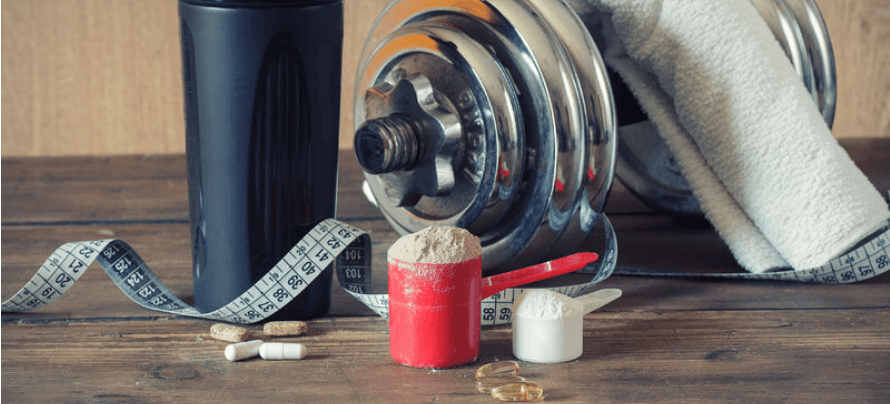
You don’t have to take supplements while on a pescatarian diet, but I highly recommend you consider it.
First, while you can get all of your protein from whole foods, this can be easier said than done, and a high-quality protein powder makes it much easier.
In terms of the specific type of protein powder, I would recommend a whey isolate protein like Whey+ or a plant-based protein like Plant+.
Now I know, technically, dairy isn’t normally “allowed” on a pescatarian diet.
The primary part of dairy that tends to cause problems for people, though, is lactose, which is almost entirely removed from whey protein isolate. This is why whey protein isolate like Whey+ is generally well-tolerated by people who otherwise avoid dairy.
And Plant+ is a plant-based protein powder made of a high-quality blend of pea, rice, and hemp protein, plus 10 additional nutrients that vegetarian, vegan, and pescatarian diets tend to lack, including beta-alanine, creatine, and vitamin B12.
Second, as you now know, the most commonly lacking nutrients on plant-based diets are omega-3 fatty acids and vitamin D and B12.
We also recall that many fish are high in omega-3s, which makes it easy to hit the minimum requirement, but if you want to enjoy benefits associated with higher levels of intake, including increased muscle growth and reduced muscle soreness, you won’t be able to rely on just seafood alone. To reach those levels, you’d have to eat four to eight servings of salmon per day.
That’s why it’s much easier to just take a high-quality fish oil supplement, like Triton.
Triton is a molecularly distilled fish oil that’s carefully produced to remove contaminants such as mercury and environmental pollutants and maximize absorption, and it’s what I take and recommend.
And to make sure that you get enough vitamin D and B12 (as well as every other essential vitamin and mineral), I recommend a well-formulated multivitamin, like Triumph.
It’s particularly important to take a multivitamin when following any kind of restrictive diet, including a pescatarian diet, as these tend to put you at the highest risk of nutrient deficiencies.
The Bottom Line on the Pescatarian Diet
At bottom, you can think of the pescatarian diet as a flexible vegetarian diet that allows you to combine the benefits of high-protein, plant-based, and omega-3 rich dieting.
The three main reasons to follow a pescatarian diet are:
- It reduces your risk of developing a number of diseases, like cancer, diabetes, and high blood pressure.
- It’s high in nutrients that many people’s diets lack.
- It’s easier for most people to follow than strict plant-based diets (such as a vegan diet).
That said, while pescatarianism is certainly healthier than how most people eat, the majority of the health benefits stem not from avoiding meat but from reducing the intake of processed, high-calorie junk foods and increasing the intake of fruits, vegetables, whole grains, legumes, and healthy fats.
When it comes to improving body composition, a pescatarian diet is better than a vegan or vegetarian diet because you have more options for high-quality protein.
Pescatarianism does have a few drawbacks, however:
- Some fish contain high amounts of mercury, and if you eat too much of them, you can harm your health.
- Going pescatarian can also reduce your intake of several key nutrients, including vitamin D, vitamin B12, and iron.
- Most people find the pescatarian diet harder to stick to than a plant-centric omnivorous diet (which can be just as healthy).
These disadvantages are easily offset though by simply limiting your intake of mercury-rich fish, supplementation, and getting creative in the kitchen.
So, at bottom, while a pescatarian diet is a very healthy way to eat, it’s not necessarily any healthier than following a plant-centric omnivorous diet that includes red meat, poultry, and pork.
And if reading this article has got you thinking the pescatarian diet isn’t right for your circumstances and goals, then take the Legion Diet Quiz! In less than a minute, you’ll know exactly what diet is right for you. Click here to check it out.
Or if you want to learn more about how to set up a diet to lose fat, build muscle, and stay vital, disease-free, and long-lived, check out these articles:
How to Make Meal Plans That Work For Any Diet
How Many Calories Should You Eat (with a Calculator)
How to Get the Body You Want With Flexible Dieting
What’s your take on the pescatarian diet? Have anything else to share? Let me know in the comments below!
Scientific References +
- Jouris KB, McDaniel JL, Weiss EP. The effect of omega-3 fatty acid supplementation on the inflammatory response to eccentric strength exercise. J Sport Sci Med. 2011;10(3):432-438. doi:10.1249/01.mss.0000354215.91342.08
- Jeromson S, Gallagher IJ, Galloway SDR, Hamilton DL. Omega-3 fatty acids and skeletal muscle health. Mar Drugs. 2015;13(11):6977-7004. doi:10.3390/md13116977
- Orlich MJ, Jaceldo-Siegl K, Sabaté J, Fan J, Singh PN, Fraser GE. Patterns of food consumption among vegetarians and non-vegetarians. Br J Nutr. 2014;112(10):1644-1653. doi:10.1017/S000711451400261X
- Prinsen Geerligs PD, Brabin BJ, Omari AAA. Food prepared in iron cooking pots as an intervention for reducing iron deficiency anaemia in developing countries: A systematic review. J Hum Nutr Diet. 2003;16(4):275-281. doi:10.1046/j.1365-277X.2003.00447.x
- Carpenter CE, Mahoney AW. Contributions of Heme and Nonheme Iron to Human Nutrition. Crit Rev Food Sci Nutr. 1992;31(4):333-367. doi:10.1080/10408399209527576
- Hurrell R, Egli I. Iron bioavailability and dietary reference values. Am J Clin Nutr. 2010;91(5). doi:10.3945/ajcn.2010.28674F
- Pawlak R, Parrott SJ, Raj S, Cullum-Dugan D, Lucus D. How prevalent is vitamin B12 deficiency among vegetarians? Nutr Rev. 2013;71(2):110-117. doi:10.1111/nure.12001
- Mozaffarian D, Rimm EB. Fish intake, contaminants, and human health evaluating the risks and the benefits. J Am Med Assoc. 2006;296(15):1885-1899. doi:10.1001/jama.296.15.1885
- Hong YS, Kim YM, Lee KE. Methylmercury exposure and health effects. J Prev Med Public Heal. 2012;45(6):353-363. doi:10.3961/jpmph.2012.45.6.353
- Toxic Effects of Mercury on the Cardiovascular and Central Nervous Systems. https://www.ncbi.nlm.nih.gov/pmc/articles/PMC3395437/. Accessed March 2, 2020.
- Bernhoft RA. Mercury toxicity and treatment: a review of the literature. J Environ Public Health. 2012;2012:460508. doi:10.1155/2012/460508
- Oken E, Bellinger DC. Fish consumption, methylmercury and child neurodevelopment. Curr Opin Pediatr. 2008;20(2):178-183. doi:10.1097/MOP.0b013e3282f5614c
- Cladis DP, Kleiner AC, Freiser HH, Santerre CR. Fatty acid profiles of commercially available finfish fillets in the United States. Lipids. 2014;49(10):1005-1018. doi:10.1007/s11745-014-3932-5
- Kris-Etherton PM, Taylor DS, Yu-Poth S, et al. Polyunsaturated fatty acids in the food chain in the United States. In: American Journal of Clinical Nutrition. Vol 71. ; 2000. doi:10.1093/ajcn/71.1.179s
- Kris-Etherton PM, Harris WS, Appel LJ. Fish consumption, fish oil, omega-3 fatty acids, and cardiovascular disease. Circulation. 2002;106(21):2747-2757. doi:10.1161/01.CIR.0000038493.65177.94
- Smith GI, Atherton P, Reeds DN, et al. Omega-3 polyunsaturated fatty acids augment the muscle protein anabolic response to hyperinsulinaemia-hyperaminoacidaemia in healthy young and middle-aged men and women. Clin Sci. 2011;121(6):267-278. doi:10.1042/CS20100597
- Du S, Jin J, Fang W, Su Q. Does fish oil have an anti-obesity effect in overweight/obese adults? A meta-analysis of randomized controlled trials. PLoS One. 2015;10(11):e0142652. doi:10.1371/journal.pone.0142652
- Buckley JD, Howe PRC. Long-chain omega-3 polyunsaturated fatty acids may be beneficial for reducing obesity-a review. Nutrients. 2010;2(12):1212-1230. doi:10.3390/nu2121212
- Innis SM. Dietary omega 3 fatty acids and the developing brain. Brain Res. 2008;1237:35-43. doi:10.1016/j.brainres.2008.08.078
- Kalmijn S, Van Boxtel MPJ, Ocké M, Verschuren WMM, Kromhout D, Launer LJ. Dietary intake of fatty acids and fish in relation to cognitive performance at middle age. Neurology. 2004;62(2):275-280. doi:10.1212/01.WNL.0000103860.75218.A5
- Parker G, Gibson NA, Brotchie H, Heruc G, Rees AM, Hadzi-Pavlovic D. Omega-3 fatty acids and mood disorders. Am J Psychiatry. 2006;163(6):969-978. doi:10.1176/ajp.2006.163.6.969
- Wall R, Ross RP, Fitzgerald GF, Stanton C. Fatty acids from fish: The anti-inflammatory potential of long-chain omega-3 fatty acids. Nutr Rev. 2010;68(5):280-289. doi:10.1111/j.1753-4887.2010.00287.x
- Virtanen JK, Mursu J, Voutilainen S, Uusitupa M, Tuomainen TP. Serum omega-3 polyunsaturated fatty acids and risk of incident type 2 diabetes in men: The kuopio ischemic heart disease risk factor study. Diabetes Care. 2014;37(1):189-196. doi:10.2337/dc13-1504
- He K, Rimm EB, Merchant A, et al. Fish consumption and risk of stroke in men. J Am Med Assoc. 2002;288(24):3130-3136. doi:10.1001/jama.288.24.3130
- Fish oil and omega-3 fatty acids in cardiovascular disease: do they really work? https://www.ncbi.nlm.nih.gov/pmc/articles/PMC3279313/. Accessed March 2, 2020.
- Clarys P, Deliens T, Huybrechts I, et al. Comparison of nutritional quality of the vegan, vegetarian, semi-vegetarian, pesco-vegetarian and omnivorous diet. Nutrients. 2014;6(3):1318-1332. doi:10.3390/nu6031318
- Calder PC, Yaqoob P. Omega-3 polyunsaturated fatty acids and human health outcomes. BioFactors. 2009;35(3):266-272. doi:10.1002/biof.42
- Wu S, Ding Y, Wu F, Li R, Hou J, Mao P. Omega-3 fatty acids intake and risks of dementia and Alzheimer’s disease: A meta-analysis. Neurosci Biobehav Rev. 2015;48:1-9. doi:10.1016/j.neubiorev.2014.11.008
- Fernandez E, Chatenoud L, La Vecchia C, Negri E, Franceschi S. Fish consumption and cancer risk. Am J Clin Nutr. 1999;70(1):85-90. doi:10.1093/ajcn/70.1.85
- Clarys P, Deliens T, Huybrechts I, et al. Comparison of nutritional quality of the vegan, vegetarian, semi-vegetarian, pesco-vegetarian and omnivorous diet. Nutrients. 2014;6(3):1318-1332. doi:10.3390/nu6031318
- Appleby PN, Key TJ. The long-term health of vegetarians and vegans. In: Proceedings of the Nutrition Society. Vol 75. Cambridge University Press; 2016:287-293. doi:10.1017/S0029665115004334
- Tuso PJ, Ismail MH, Ha BP, Bartolotto C. Nutritional Update for Physicians: Plant-Based Diets. Perm J. 2013;17(2):61. doi:10.7812/TPP/12-085
- Alexander S, Ostfeld RJ, Allen K, Williams KA. A plant-based diet and hypertension. J Geriatr Cardiol. 2017;14(5):327-330. doi:10.11909/j.issn.1671-5411.2017.05.014
- Tuso P, Stoll SR, Li WW. A Plant-Based Diet, Atherogenesis, and Coronary Artery Disease Prevention. Perm J. 2015;19(1):62. doi:10.7812/TPP/14-036
- Li D. Effect of the vegetarian diet on non-communicable diseases. J Sci Food Agric. 2014;94(2):169-173. doi:10.1002/jsfa.6362
- Tantamango-Bartley Y, Jaceldo-Siegl K, Fan J, Fraser G. Vegetarian diets and the incidence of cancer in a low-risk population. Cancer Epidemiol Biomarkers Prev. 2013;22(2):286-294. doi:10.1158/1055-9965.EPI-12-1060
- Gilsing AM, Weijenberg MP, Goldbohm RA, Dagnelie PC, Van Den Brandt PA, Schouten LJ. The Netherlands Cohort Study - Meat Investigation Cohort; A population-based cohort over-represented with vegetarians, pescetarians and low meat consumers. Nutr J. 2013;12(1):156. doi:10.1186/1475-2891-12-156
- Li D. Effect of the vegetarian diet on non-communicable diseases. J Sci Food Agric. 2014;94(2):169-173. doi:10.1002/jsfa.6362
- Tantamango-Bartley Y, Jaceldo-Siegl K, Fan J, Fraser G. Vegetarian diets and the incidence of cancer in a low-risk population. Cancer Epidemiol Biomarkers Prev. 2013;22(2):286-294. doi:10.1158/1055-9965.EPI-12-1060
- Tuso PJ, Ismail MH, Ha BP, Bartolotto C. Nutritional Update for Physicians: Plant-Based Diets. Perm J. 2013;17(2):61. doi:10.7812/TPP/12-085










